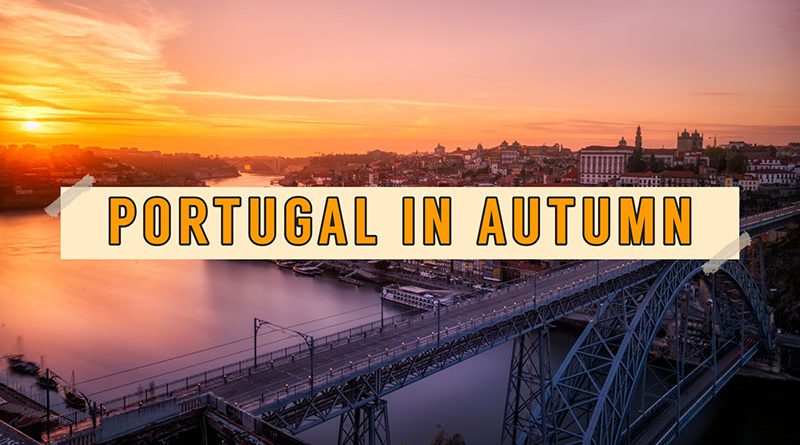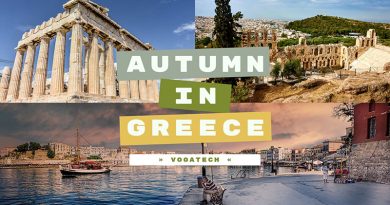Best Places to Visit in Portugal this Autumn
Portuguese is the fourth most widely spoken language in the world so it would be useful to learn a phrase or two before you visit the country. Situated at the far west end of continental Europe, Portugal had long been a gateway to other continents. Today, this is reflected in the country’s culture cuisine and a generally friendly and diverse populace.
Portugal is a summer destination but if you’re not looking for a dip in the Atlantic Ocean, then autumn is the ideal time to visit the country. Visitors are mostly attracted to colorful and bustling cities of Lisbon and Porto, as well as picturesque seaside villages.
In fact, October is the ideal month for a city break in Portugal as the average air temperature is a pleasant 22 degrees Celsius. You can get on the city’s iconic yellow cable cars, offering a stunning view of the Tagus River and the Vasco da Gama bridge, one of Lisbon’s landmarks.
Useful resources for your journey to Portugal in fall:
- Amazing Travel Hacks You Want to Know Before Your Next Trip
- Experts Advise: The Best Travel Accessories and Gadgets
Porto
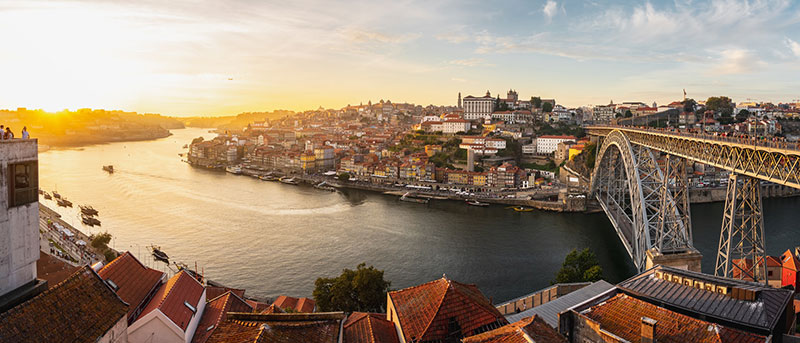
Porto is a fabulous destination for many reasons, and the entire historic city center has been designated a UNESCO World Heritage Site. Its buildings are covered in colorful azulejo tiles, and the view of the red-tiled roofs from the Dom Luís I bridge across the Douro River is simply breathtaking.
September and October are the best months to visit, as the temperatures are very comfortable and the summer crowds have started to disperse. You’ll be able to taste the roasted chestnuts that are sold on the streets at this time of year, and the vineyards that climb up the slopes on either side of the Douro River will be turning magical shades of yellow, orange and red.
As the school year begins in September, you’ll likely see students wandering the streets in flowing black robes, looking like they’re running late for their potions class at Hogwarts. It’s a little-known fact that JK Rowling wrote the first few chapters of Harry Potter and the Philosopher’s Stone while living in Porto, and these student robes are one of several ways that Porto inspired the Harry Potter series.
Autumn is also the best time to enjoy Porto’s lovely parks. The Serralves Foundation is a private art museum surrounded by one such beautiful park. In late September, an autumn festival is held here, and entry is free. Alternatively, there’s never an admission fee to wander around Porto’s Botanical Gardens. By November, Porto starts to get chilly and there’s a higher chance of rain, so come in the first half of autumn if you can.
Suggested by Wendy Werneth, The Nomadic Vegan
Lisbon

Boasting wonderful weather, delicious food, and lots to see and do, it’s hard not to fall in love with Lisbon.
Famously built on seven hills the city is eminently walkable but requires some stamina! Fortunately, bright yellow and red trams ply the city streets. But really the best way to discover Lisbon is on two feet. Portugal’s capital is full of characterful neighborhoods and colorful streets; wide plazas and hidden courtyards; delicious restaurants and cool bars. There are lots of things to do in Lisbon but you should probably start at the Praça do Comércio.
Other highlights include the Elevador de Santa Justa and Livraria Bertrand, the oldest bookstore in the world. Make sure you spend a day in the Alfama neighborhood, the oldest in the city. Contrast this with a day out in the LX Factory, Lisbon’s newest creative hub. Take a day trip to Belem, home to the famous Jeronimos Monastery and the equally famous Pastéis de Belém, the original Portuguese tarts. Three days is the minimum amount of time you need to really enjoy Lisbon but no matter how long you stay here, it’s guaranteed you will want to return.
Suggested by Katja, Globetotting
The Algarve
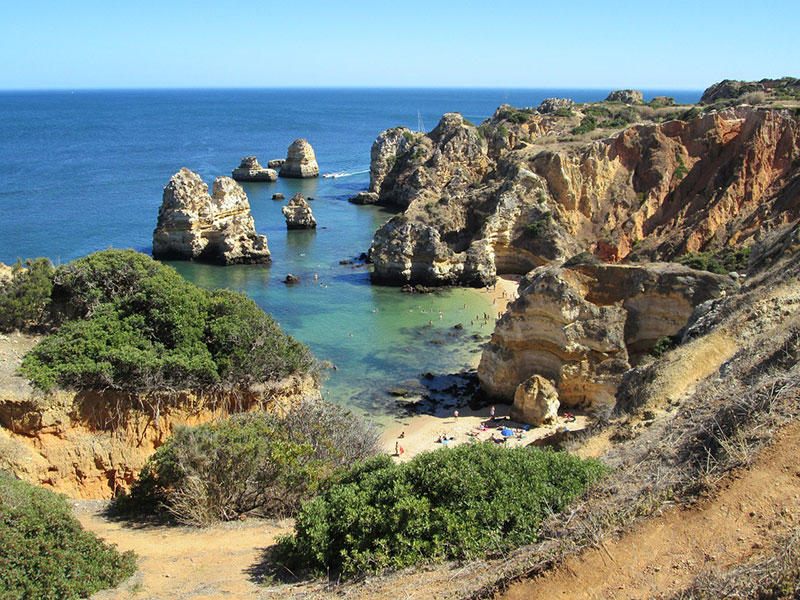
The Algarve is great in any season but in Autumn it feels particularly lovely. This wonderful region of Portugal, stretching across the bottom of the country is beautifully balmy in Autumn and best of all the crowds of tourists have gone home. While not every day will be sun guaranteed many days will be warm and sunny and full of that feel-good vibe Portugal is known for. Lots of the attractions close down out of the summer season but don’t let this put you off, most of the ceramic shops are open to perusing gorgeous plates and tiles the Algarve is known for.
You can also visit all the beaches without jostling for a place on the sand, along with activities like horse riding, tennis and golf to enjoy this slower-paced atmosphere. A week’s trip will be perfect for shaking off the stresses of day to day life back at home. We have visited the Algarve with kids on numerous trips and love how family-friendly it is, how warmly welcomed visitors are, and how easy it is to relax there.
With fantastic food (Portugal has its own form of tapas and lots of delicious, fresh dishes have originated here in the Algarve) and some of the best beaches in Europe, Autumn is a time to come, relax and enjoy the slower pace of life this area experiences in those slightly out-of-season months.
Suggested by Nichola, Globalmouse Travels
Douro Valley
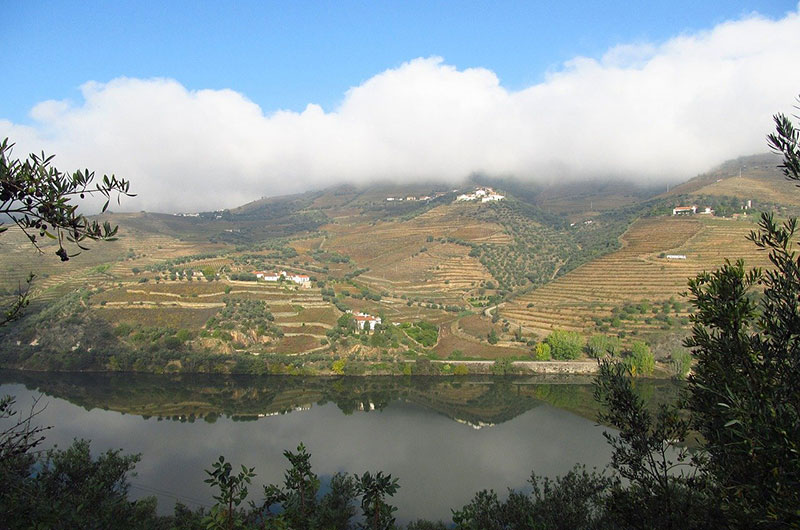
Portugal’s Douro Valley in autumn is a riot of color as the grapevines which carpet the hills on either side of the mighty river, turn a glorious ochre and deep red. The grapes grown here are for a port, produced in local vineyards, and still taken downriver by boat to the lively city of Porto.
The Rio Douro (river of gold) dominates the region and winds for over 200km from the Spanish border to the sea and provides the perfect route for a campervan trip of Portugal if you have a week to spare. Head for Amarante, a beautiful riverside town in a gorge of the Rio Tamega, one of the Douro’s many tributaries. The old town is buzzy with good restaurants, gift shops, and pastelaris selling the delicious pastel de nata, the Portuguese custard tart (best tried warm btw).
From here, Lamego is an hour’s drive through spectacular and dramatic scenery. The town is famous for two things; raposeira (Portuguese champagne) and the shrine of Nossa Senhora dos Remedios, one of the greatest Baroque structures in Europe and a thigh-burning 611 steps to get there, steps which pilgrims take annually in late summer.
Make for Pinhao along the minor N222 route which hugs the south of the Douro and gives fantastic views of the colorful vineyards, like intricately woven tapestries rising up from the river. Pinhao is the center of port production and the best place to visit a vineyard and take a wine tour and tasting, or even stay on a working wine estate for the real deal!
Suggested by Izzy & Phil, The Gap Decaders
Sintra
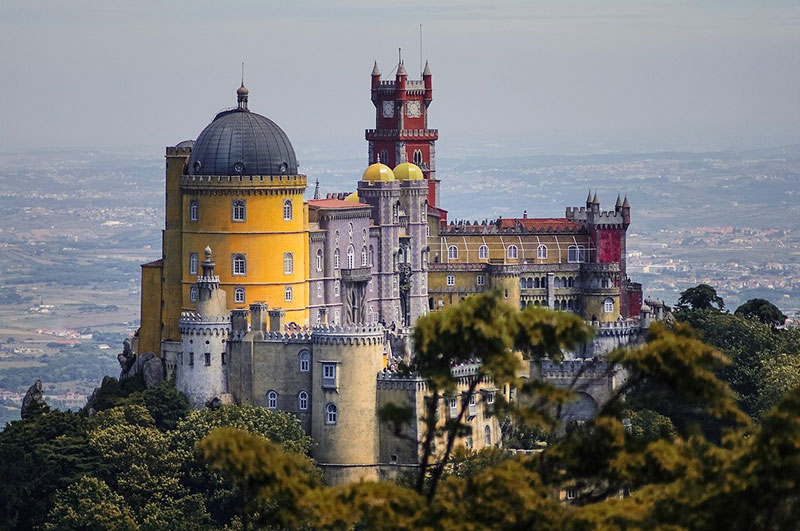
Sintra is a popular destination in Portugal. And visiting this stunning place in the fall or autumn is perfect as the weather is not too hot, and the city’s iconic landmarks are not super crowded.
Sintra can be explored on a day trip from Lisbon and is known for its famed Pena Palace. Located on the Sintra Hill, this Romanticist castle/Palace was built in the 19th century. In order to visit the Palace and enjoy a hike at Pena Park one has to take a bus from the town center. During summer or peak seasons, waiting for a bus in the heat and crowd is a nightmare.
During the fall, it is relatively easier to find a bus and a seat to get to the Palace. At the palace, ensure to visit the interiors and learn about the construction and the history of the town.
Other than the Pena Palace, the Castle of the Moors and the Quinta da Regaleira are must-visit attractions. Being a hilly town, expect a ton of walking, don’t forget to wear a comfortable pair of walking shoes and carry a water bottle.
Once you have explored all the prime landmarks, set aside some time to enjoy the town center. With mesmerizing views and tons of outdoor cafes to choose from, Sintra is a delight in autumn.
Booking a hotel in Sintra during autumn is easy, as it is off-season. The closest airport to Sintra is located in Lisbon. You can drive to Sintra or take a train from the city center, which is an affordable option.
Suggested by Mayuri, ToSomePlaceNew
Costa Vicentina
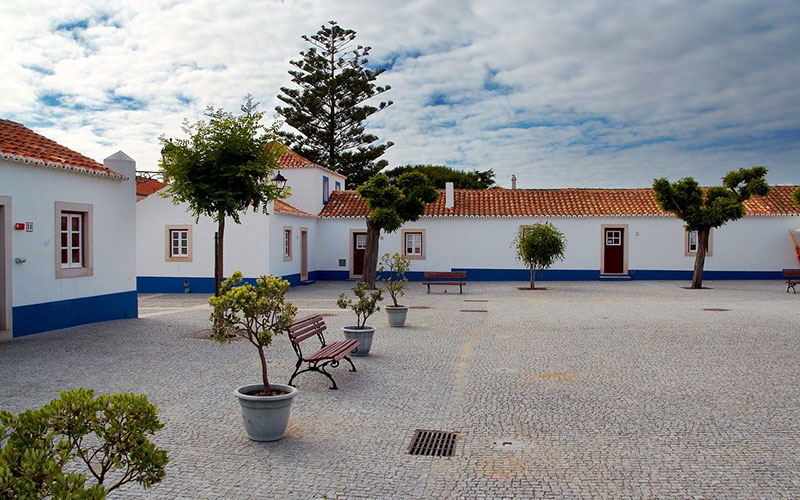
Costa Vicentina in the south of Portugal is an amazing place to visit in autumn. The coast is easy to reach, it’s about 170km from Lisbon. You can rent a car to explore the area or use public transport. There are several daily buses from Sete Rios bus station in Lisbon to several towns along the coast. The best towns to stay here are Porto Covo, Vila Nova de Milfontes, Zambujeira do Mar.
Autumn is a great time to visit the area. The weather is good, it’s warm but not too hot like in summer months. There are significantly fewer tourists than in July and August; the beaches are less crowded and accommodation gets cheaper.
The Costa Vicentina is an incredibly beautiful place; unspoiled beaches, rugged coastline, dramatic cliffs, hidden bays and caves, small fishermen towns, and diverse wildlife. It’s a perfect place for an adventure holiday. There are several hiking trails along the coast including the Fishermen’s Trail, a stunning 4-day trekking route along the coast. The trail starts in Porto Covo, a beautiful small town on the Coast Vicentina. Hiking is not the only outdoor activity here.
This area is a great place for watersports such as surfing, kitesurfing, kayaking, and diving. Odeceixe Beach and Arrifana Beach are the best surfing spots on the coast. There are several surf schools that offer classes and gear rental.
The Costa Vicentina can be visited as a weekend trip from Lisbon but to really explore the area I’d recommend spending here at least a week. There are plenty of things to do to keep one busy.
Suggested by Campbell & Alya, Stingy Nomads
The Alentejo

Whilst most visitors to Portugal flock to Lisbon, Porto, or the holiday resorts in the Algarve, like Albufeira and Lagos, my husband and I decided to discover The Alentejo region, only a two-hour drive east of Lisbon and yet so undiscovered. We decided to drive to the region’s capital of Évora, an ancient and lively student city filled with Roman remains and glinting gothic churches.
Just before arriving in Évora, we stumble onto something quite spectacular, the megaliths of Cromeleque dos Almendres, just on the outskirts of de city. Over 95 granite stones are scattered amongst the countryside bearing ancient signs, designed for holy rituals and astrological orientation. And Évora has turned out to be just as enticing. It’s one of the most beautifully preserved historical towns in Portugal, with winding lanes and bustling squares. Highlights in Évora are, without a doubt, the Roman temple, cathedral, and cloisters. But, since The Alentejo is one of the best wine regions of Portugal, be sure to go for a wine tasting at Adega Cartuxa just a little outside the city center.
Speaking of wine. You really haven’t visited the Alentejo region if you don’t visit at least a vineyard or three. The wine produced in the region is amongst Europe’s best and the winemakers in The Alentejo are often still family-run businesses, welcoming visitors for a tour and tasting. Herdade de Esporão is set in the heart of The Alentejo offering wine and food pairings. From this vineyard, it’s only a short drive to one of the most spectacular places to visit in the region: Monsaraz.
The Alentejo is said to be famous for golden plains, rolling hillsides, and traditional whitewashed villages. And Monsaraz is the place to drink this all in. A charming hillside village with a castle providing amazing views over the olive groves and whitewashed cottages in the villages. If you feel like discovering Portugal away from the masses, The Alentejo is where you should go.
Suggested by Esther de Beer, mooistestedentrips.nl
Madeira Island
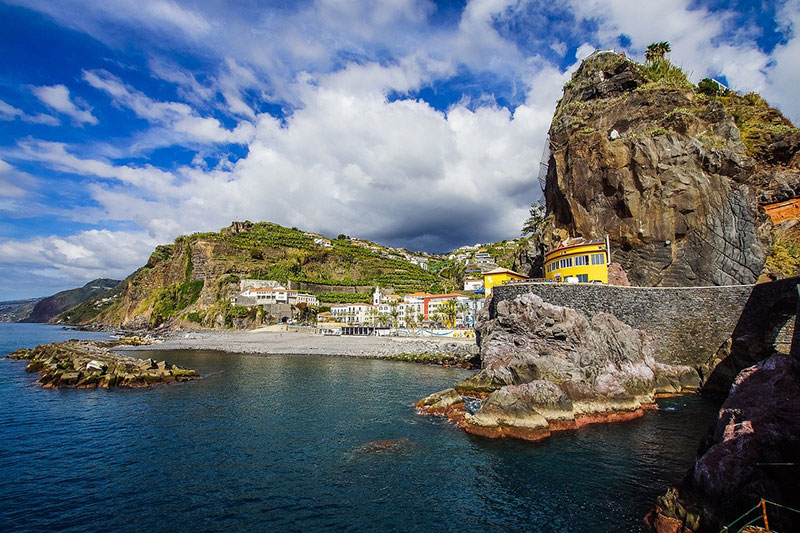
Set deep into the Atlantic Ocean is the island of Madeira. A heavenly place with lots of breathtaking natural landmarks and historical cities. Madeira was found around the 14th century by Portuguese explorers and was quickly settled. Nowadays, the island of Madeira is considered to be a year-round vacation destination offering lush tropical forests, mild climate, incredibly tasty cuisine, and wine. Madeira is also well-known for its adventuresome hiking trails, miradouros (viewpoints), and secluded beaches. To experience all that this heavenly island offers it is recommended to spend around 7 days.
One of the best things to do is to spend a couple of days in the capital city of the island – Funchal. It is the first city founded on the island and probably the most colorful one. While in Funchal it is best to visit the Monte Palace of Madeira and the Botanical Garden. Both of these places offer incredible collections of historical artifacts, plants from all over the world, and breathtaking views. While in Funchal it is recommended to try out the famous alcoholic drink Poncha, which is made of sugarcane rum and Madeira wine.
Exploring the whole island is never a bad idea and if you like hiking you will feel like winning the lottery there. Some of the most fascinating hiking trails are the Ponta de São Lourenço, which ends at the westernmost point on the island, also known as the “End of the World” by the locals. Another hiking trail to take your breath away is the trail to Pico Ruivo, the highest peak in Madeira. If you prefer a more carefree hiking trail, then head for Levada das 25 Fontes, known as the waterfall trail.
However, if you just want to lay on the beach or swim in the ocean there are also plenty of options. Among the best beaches on the island are the beaches in Seixal and Machico, but you can also enjoy the natural swimming pools in Porto Moniz.
Suggested by Alexandrina Nikolova, earthosea.com
Monsaraz
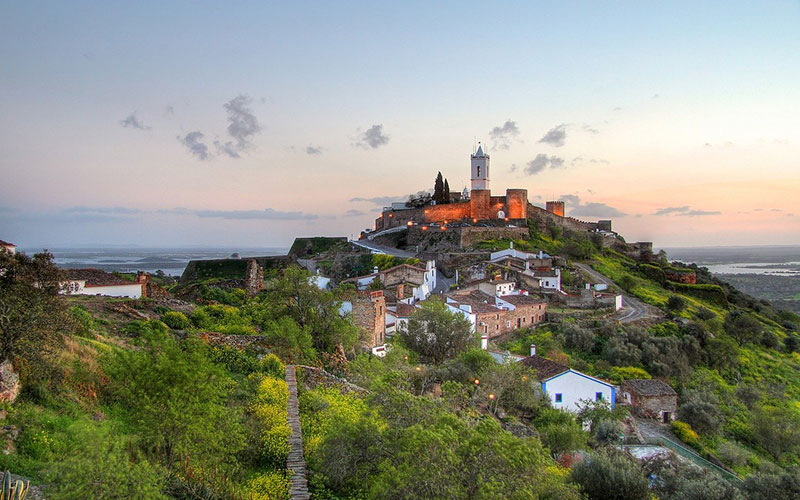
Monsaraz is one of the most beautiful villages in Portugal, possibly Europe. It’s a tiny mountain-top village in the rural Alentejo region and overlooks the Barragem do Alqueva lake system that runs along the border with Spain.
It doesn’t take long to see Monsaraz but to experience it, it’s worth staying at least one night. Its location is remote so it doesn’t get crowded, and at night and early morning the place is deserted, an eerily quiet but amazing place to wander and have to yourself.
Monsaraz is a walled medieval village, essentially two long streets with a few connecting lanes. Its Castle, at the southern end of the village, is a great vantage point, with a great view over the village rooftops and the plain below. There is also a fine view to the east, and the Alqueva Lakes. Nearly all of the buildings are whitewashed, from humble houses to grand Renaissance and Baroque churches. The streets are car-free – you have to leave the car outside the walls.
Monsaraz is nowhere near as touristed as most destinations in Europe – there are a few souvenir shops, places to stay and restaurants, but it still retains its character. The Alentejan cuisine – think pork, lamb, and bread – is hearty and delicious, and the local wine is also very good.
Suggested by David Angel, Delveintoeurope
Coimbra
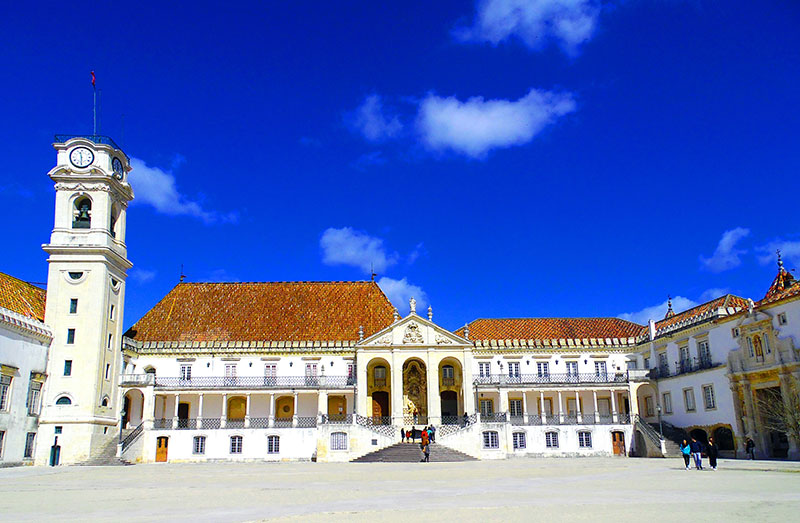
Lying halfway from Lisbon to Oporto, Coimbra is the perfect location to visit all year round. The city in central Portugal is well known for its cultural heritage and ancient history.
Maybe you will know this city for the historical University, the oldest in Portugal, but not many know that Coimbra was once the Capital of the country.
Filled with gorgeous architecture, ancient churches, and monasteries, over cuter shops and boutiques and fine cefès and restaurants. You will be so amazed by the awesome style of this city, quite often out of the typical guides about Portugal. This city has preserved its heritage of commercial hub, welcoming also tourists, many making the epic road trip from Lisbon to Porto.
Like many other cities in the country, Coimbra is also divided by a river passing right in the center, the Mondego River. That makes the city perfectly divided in DownTown and UpperTown. Over than just royal heritage, this city is preserving the largest and most compelling Roman site in Portugal, telling you part of the history even more epic. In fact, you can go through the centuries in this city, looking at the reminiscence of conquerors that have left their marks in Portugal. Sites you should visit in Coimbra are the Velha Universidade de Coimbra, the old university, admire the details of the Igreja de Santa Cruz, and Praça do Comércio, the busiest hub of the city.
Suggested by Alessia & Toti, Italian Trip Abroad
Óbidos, Portugal
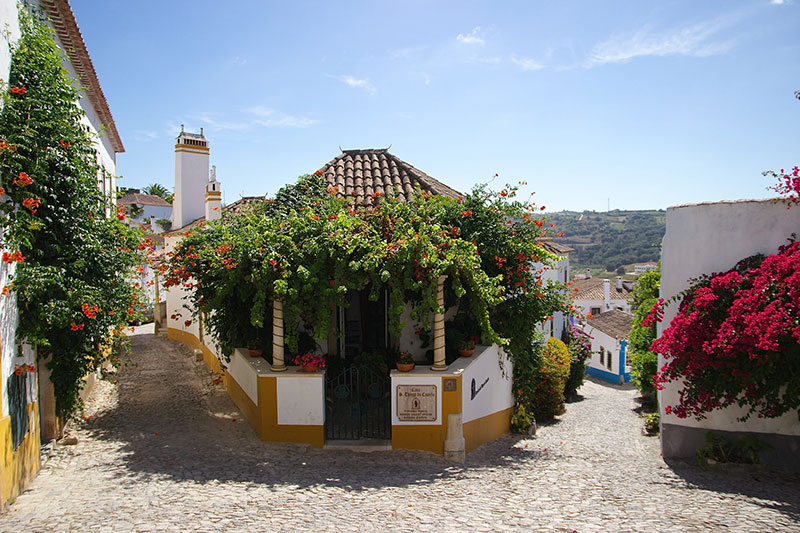
Óbidos is a beautiful whitewashed town that’s surrounded by a medieval town wall and guarded by an imposing castle. In fact, the castle has even been declared one of the seven wonders of Portugal. Hundreds of years ago, a tradition began whereby the king of Portugal would bequeath the town to his bride as a wedding present. Thus, Óbidos enjoyed the patronage of the queens, which is why it is so richly endowed with beautiful architecture and so remarkably well preserved.
Most tourists just come to Óbidos on a quick day trip from Lisbon, which is about an hour away by bus. But even though the town is not very big, I recommend staying at least overnight. That way, you’ll be able to enjoy it in peace once all the daytrippers have left, and you’ll have time to explore all its nooks and crannies. There are many more things to see and do in Óbidos than most people realize! The obvious must-dos are to walk along the medieval walls, visit the grounds of the castle and knock back a shot of ginjinha, the local sour cherry liqueur.
But after that, you’ve still got a number of narrow back alleys and lesser-known monuments to explore, plus the dozen or so bookstores. Óbidos has quite a reputation as a literary hangout, and you’ll find bookshops in the most unlikely places. My favorites are in the organic market and in the church next to the castle entrance.
Suggested by Wendy Werneth, The Nomadic Vegan
Ericeira
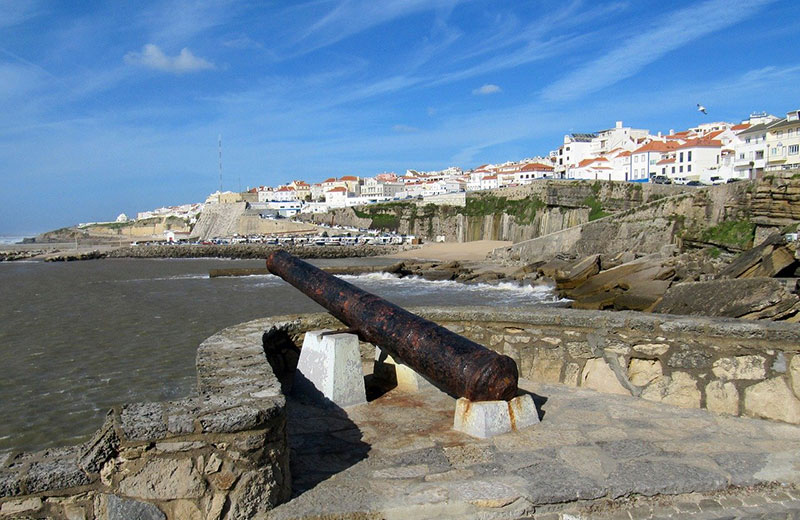
Ericeira is a hidden gem along the coastlines of Portugal. It was a welcome break after 2 weeks of visiting the busier tourist attractions along with Portugal. Ericeira is an antidote to the mass-tourism descending on the area and at only 45 minutes away from Lisbon, you can come here as a day trip or take a longer break to go at a slower pace of life.
Don’t expect a long list of things to do in this small fishing village. Ericeira is made for those who are looking to disconnect and take things slow and serene. You can explore the maze of alleyways in the Old Town and spy the colorful doors that line the cobblestone streets. Feast at some of the boutique independent bars and restaurants that are open in the area. I would recommend breakfast at The Mill a quick lunch stop at Magic Quiver and dinner at Tik Tapas before enjoying the nightlife at Adega Bar 1987 and Tubo where you can rub shoulders with the locals. Then spend the rest of your days lounging at the stunning beaches (without the onslaught of tourists) or try your hand at surfing with waves that welcome some world-famous surfers year-round. Also, be sure to take a stop and marvel at the sunsets. It was one of the most beautiful I’ve ever seen.
Suggested by Akid Zolkifli, Chasing Continents
Elvas
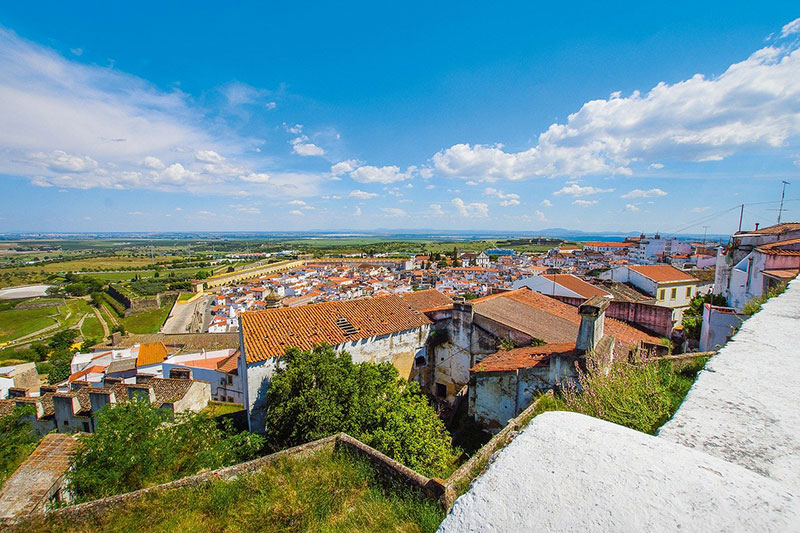
Elvas is a frontier town, located just a few kilometers from Spain and it’s strongly marked by this proximity. Spain is the neighbor but it was also the enemy for centuries. To protect the city, and the rest of the country, Portugal had to develop fortifications which later became some of the best things to do in Elvas.
The walls, the two main forts, the several smaller forts, the castle, and the aqueduct are a World Heritage site since 2012. UNESCO calls it the “Garrison Border Town of Elvas and its Fortifications” while considering it the “largest bulwarked dry-ditch system in the world” and “the best surviving example of the Dutch school of fortifications anywhere”.
When visiting Elvas the first thing you’ll see is the striking Amoreira aqueduct, with almost 8 km long and 843 arches. In its highest section, it has 4 levels of arches and 31 meters high.
Nossa Senhora da Graça Fort and Santa Luzia Fort are the other two incredible constructions that made Elvas a UNESCO site. They are both star-shaped forts, with several layers of defensive strategies and systems. Nossa Senhora da Graça, located north of Elvas is particularly fun to visit as you can freely wander inside, on the several walls and exterior. You can even enter the barracks and the governor’s house. This fort was pivotal during the peninsular wars, proving its effectiveness by never being conquered.
Suggested by Jorge Bastos, Portugal things
Evora
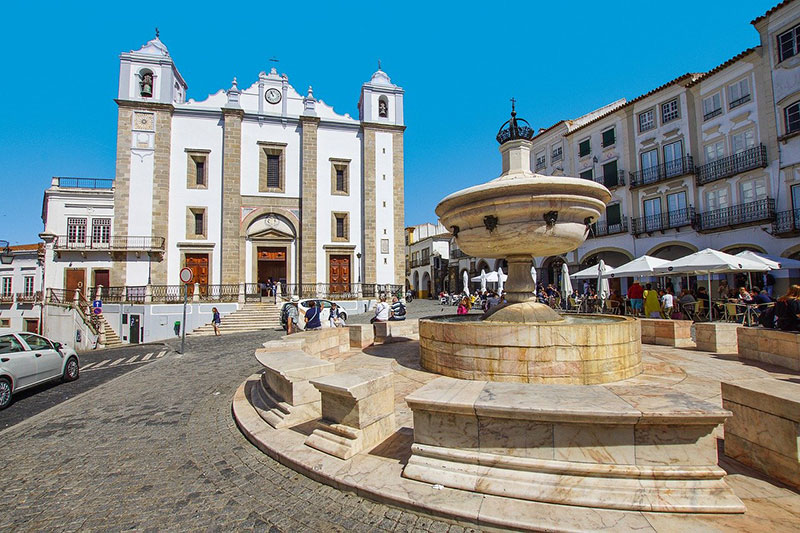
If you travel to Portugal this autumn, you must visit Evora. Known as Portugal’s “Museum City” due to its preserved history and architecture, Evora is a UNESCO heritage site with a Roman temple, Celtic megaliths, medieval cathedral, and a bone church ossuary. The houses and buildings of Evora’s city center are painted saffron yellow and white, another charming and memorable feature.
When visiting, be sure to see Giraldo Square, the Cathedral of Evora, Silver Water Aqueduct, Roman Temple, and Evora University. Other don’t-miss sights include the San Francisco Church and Bone Chapel, which also has a museum collection of religious art, and the Museum of Evora.
Many people visit Evora on a day trip from Lisbon since it’s possible to see the main sights of the city within a day. But to fully explore Evora, you should also add on a day trip to see the Almendra Cromlech megaliths outside the city, have a tour and tasting at the Cartuxa winery, and enjoy Evora’s restaurants, which range from hearty local fare to fine dining. You can also stay in a boutique hotel within the old Roman city walls, including a former olive mill or a convent with a view of the Roman temple.
For more tips on visiting Evora, check out my guide to visiting Portugal’s Museum City.
Suggested by Adrienne, The Haphazard Traveler
